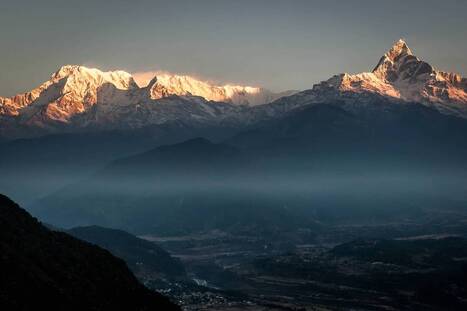|
Thanks to the great work of our guides, Ian, and Christine of Adventures Treks, for organising a wounderful trek into the Himalayas. This was an guided trek and everything was taken care of! They hired local guides and porters who lead us through their countryside and taught us about life in the mountains of Nepal.
|
Financial:
We were invited by good friends to join this trek - needless to say it was several thousands of dollars each to join the group. The bigger the group the less per person. The group was maxed at twelve - a great number for two guides, porters and the ensuing interactions within group members. In addition to this initial cost:
We were invited by good friends to join this trek - needless to say it was several thousands of dollars each to join the group. The bigger the group the less per person. The group was maxed at twelve - a great number for two guides, porters and the ensuing interactions within group members. In addition to this initial cost:
- Depending on where you live, transportation includes airfare, trains and buses or cabs to get to the start of the journey.
- A tourist visa can be purchased (short-$30 US, 30 days-$50 US, or 90 days-$125 US) upon entry to Nepal at the airport. Park permits can be purchased where you hire guides and porters.
- The cost for a night’s stay in Tea houses was very modest ($3:00 US for a private room in 2013)
- For those interested in planning their own adventures, guides and porters can be hired in Katmandu and in Pokhara.
Health and Fitness:
Skills:
- We were in good physical condition due to several other hikes that season. This trek is moderate and at its highest deals with elevations around 3,200-3,300 meters. Elevation we've hiked in often and we were well adjusted to this walking season. It is worth exploring for those not used to elevation beyond 2,500 meters - several folks within our party had some issues (headaches, nausea, etc.)
Skills:
- The trek is not well marked. A guidebook, or guide is a good idea to not get lost in the maze of trails and villages.
- Understanding and speaking the language of the country is important for asking directions, purchasing food or meals, booking into lodging.
|
On a guided trek, check with your guides as to what equipment is supplied. Our guides provided sleeping bags and a large tote for our personal gear to be carried by the porters. Remember to minimise their loads!
We carried in our backpack our clothes, toiletries (don’t forget toilet paper), personal first aid, water bladders and Aqua drops to purify the water. There is additional information in our 'Equipment Section'. |
|
The joys of a trek in a foreign country are many. But one of them is certainly the food. Exploring the various flavours of the food is part of the adventure.
Travelers with special dietary needs, or picky eaters, should inform themselves what will be available to them during their trek. We chose a vegetarian diet during this trek after seeing how the meat and poultry was butchered… Not sanitary! A few in our group ended up with a debilitating diarrhea that lasted for most of the trek. Things we learned in Nepal:
|
For detailed information on our exercise routines check out our 'Exercise' page. |












